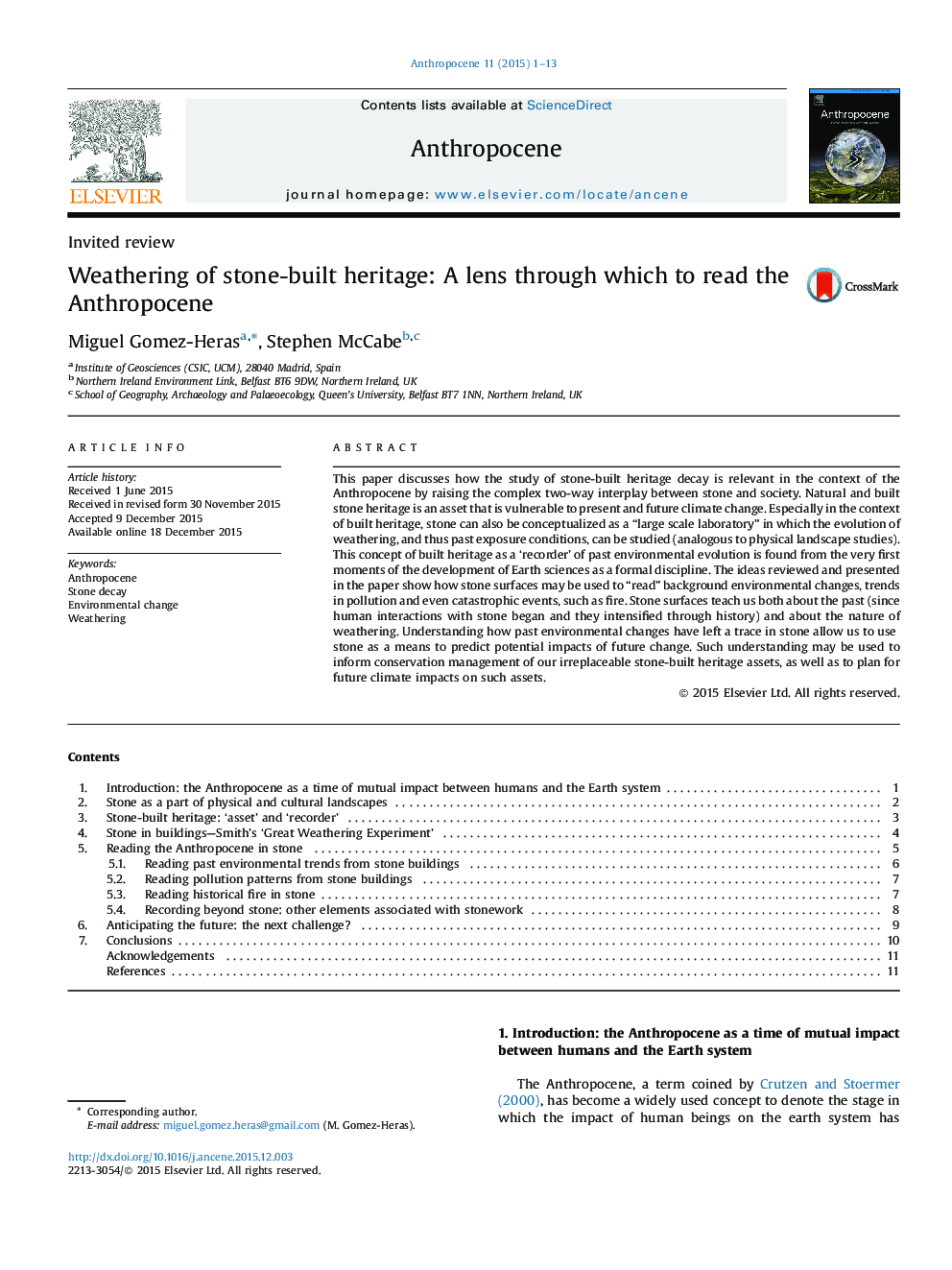| Article ID | Journal | Published Year | Pages | File Type |
|---|---|---|---|---|
| 4461865 | Anthropocene | 2015 | 13 Pages |
This paper discusses how the study of stone-built heritage decay is relevant in the context of the Anthropocene by raising the complex two-way interplay between stone and society. Natural and built stone heritage is an asset that is vulnerable to present and future climate change. Especially in the context of built heritage, stone can also be conceptualized as a “large scale laboratory” in which the evolution of weathering, and thus past exposure conditions, can be studied (analogous to physical landscape studies). This concept of built heritage as a ‘recorder’ of past environmental evolution is found from the very first moments of the development of Earth sciences as a formal discipline. The ideas reviewed and presented in the paper show how stone surfaces may be used to “read” background environmental changes, trends in pollution and even catastrophic events, such as fire. Stone surfaces teach us both about the past (since human interactions with stone began and they intensified through history) and about the nature of weathering. Understanding how past environmental changes have left a trace in stone allow us to use stone as a means to predict potential impacts of future change. Such understanding may be used to inform conservation management of our irreplaceable stone-built heritage assets, as well as to plan for future climate impacts on such assets.
